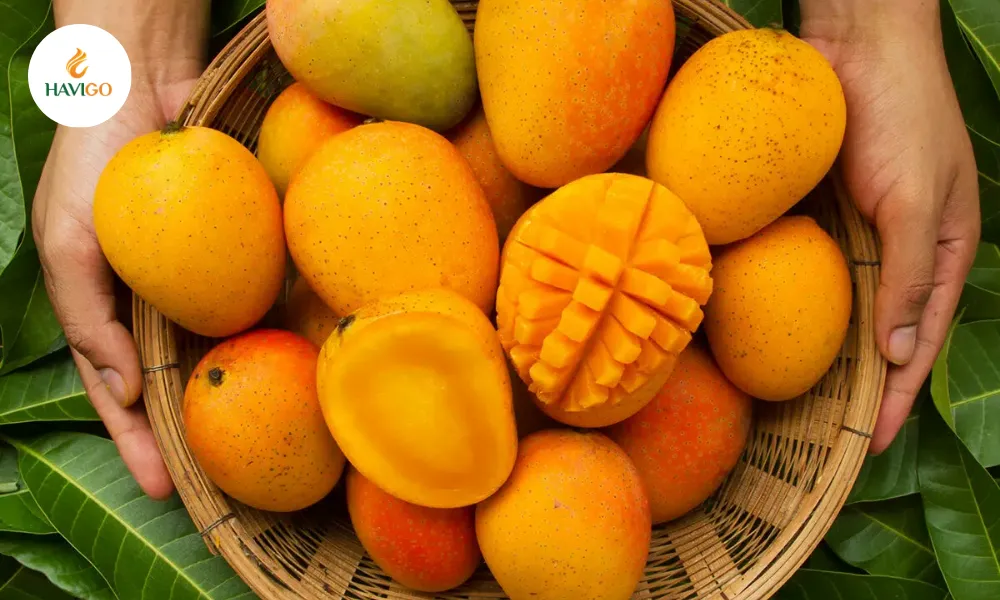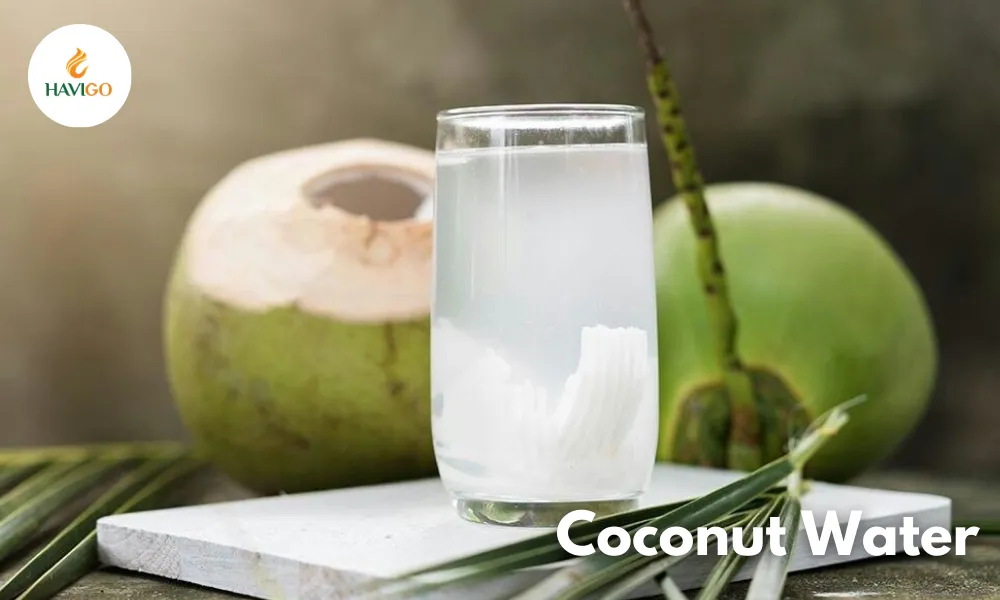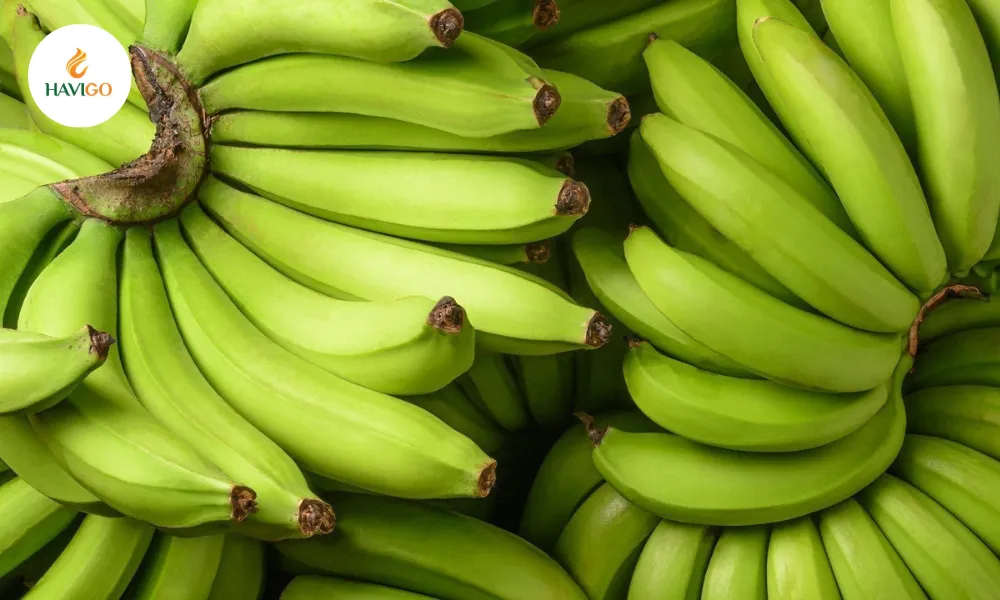After harvesting, processing green coffee beans is a crucial stage of the journey from vibrant coffee cherries to roasted beans. This stage significantly impacts the final flavor profile. There are two main processing techniques: dry processing (natural) and wet processing (washed). Let’s explore these coffee bean processing methods to understand how they influence the coffee you enjoy.
1. Dry Processing Green Coffee Beans
In the dry processing method (natural processing) farmers lay ripe coffee cherries out in the direct sun on large patios. The minimum of ripe coffee fruits should be around 70 – 75% to ensure the quality. After several weeks, the sun’s warmth dries the entire fruit, including the skin, flesh, and layer around the coffee bean. When the fruits are dried, reveal the coffee bean with a thin layer. This extended drying period allows the natural sugars and flavors of the fruit to infuse the beans resulting in a unique robust flavor.
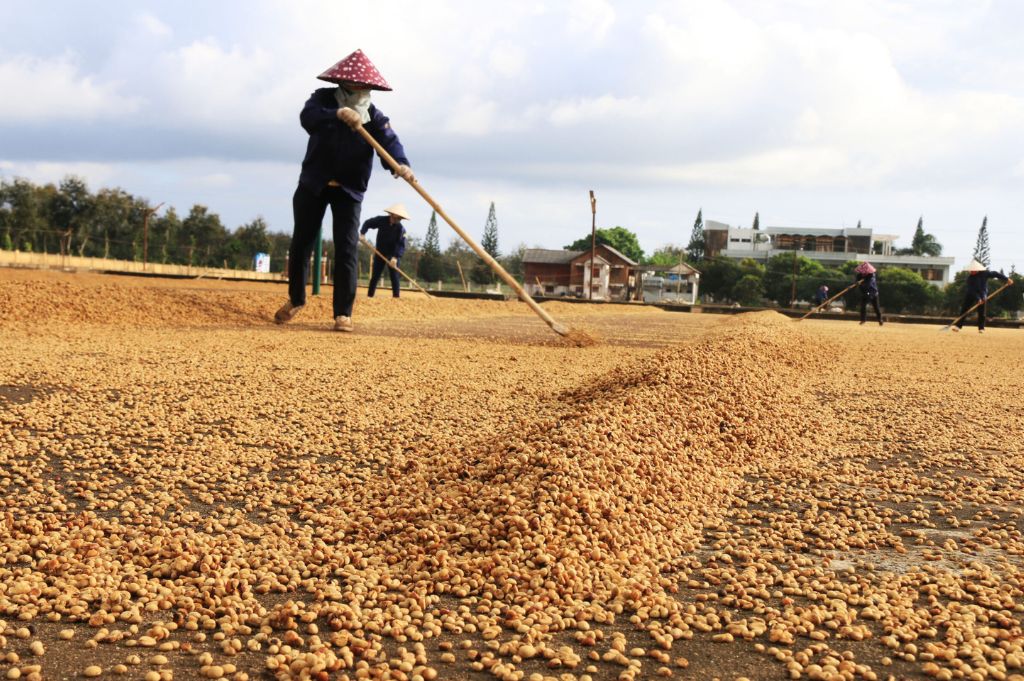
We should know that 90% of Robusta coffee beans are dry processed. Naturally processed coffee beans are famous for their intense fruit notes, full-bodied character, and earthy undertones. They can sometimes exhibit funky or winey characteristics. It’s a testament to the effect of sun and heat during the drying process on the unique flavor of Robusta green coffee beans.
2. Wet Processing Green Coffee Beans
The wet processing method (or washed processing) takes a different approach. Almost all Arabica coffee beans are processed by wet method. Firstly, farmers pulp to remove the skin and most of the coffee fruit flesh. To easily do that, the ripe fruit rate of the coffee cherries is at least 97%. However, the remaining beans still have a sticky layer. So the farmers ferment them in tanks. This fermentation breaks down the mucilage, allowing for easier removal later.

Following fermentation, they meticulously wash the coffee beans and then dry them on patios in direct sun. The wet processing results in a cleaner, brighter coffee profile with pronounced acidity. Moreover, it clearly brings a smoother, milder taste to coffee beans.
3. A touch of polish: Wet polishing for Robusta
Wet polishing is an additional stage that people use for Robusta coffee beans. In this process, people use machines to polish the coffee beans with water. The purpose is to remove the thin layer (or silk skin) that the drying process left. This creates more uniform and visually appealing coffee beans with a shiny finish.
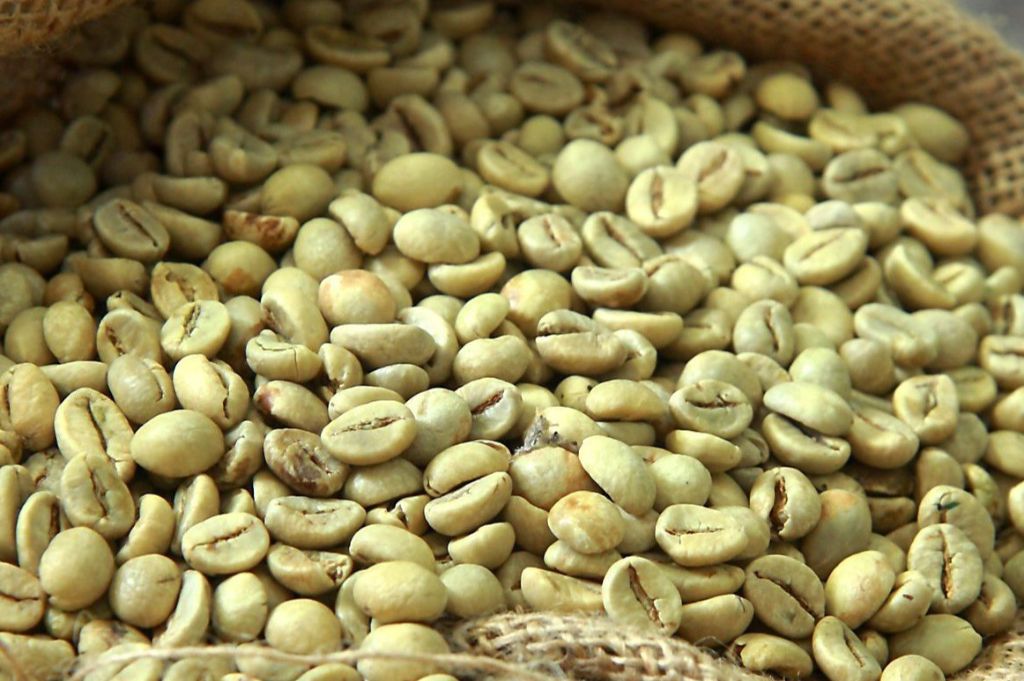
While making a better appearance, wet polishing can slightly reduce the flavor of the coffee and introduce a neutral one. People don’t commonly use this technique for Arabica beans due to the potential for breakage and the minimal impact on their visual appeal.
Summarization: Understanding the dry and wet methods can help us know more about the impacts of processing on the flavor of coffee beans. The intense fruit notes and a full body come from dry-processing. On the other hand, wet processing brings about the favor of clean, bright acidity and a clear expression. Moreover, Robusta beans often undergo wet polishing for aesthetic reasons. So enjoying a cup of coffee is not a journey of flavor. It also contains knowledge and passion for these flavorful coffee beans.
Havigo Company Limited operates in the field of agricultural export. We wish to bring high-quality Vietnamese agricultural products such as spices, rice, beans, and fruits… to the world. We supply you with high-quality products at the best price. If you find interest in importing Vietnam Coffee Beans, please contact us for better support via WhatsApp: +84 979 58 58 56.



